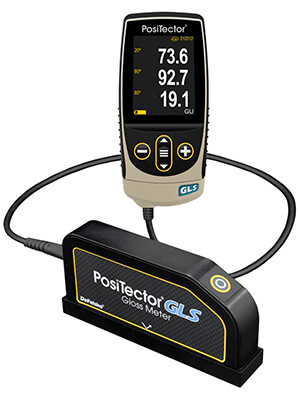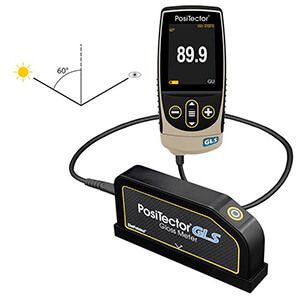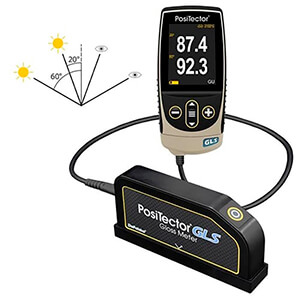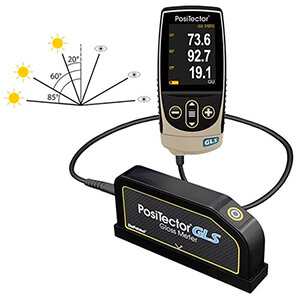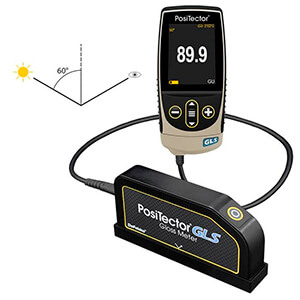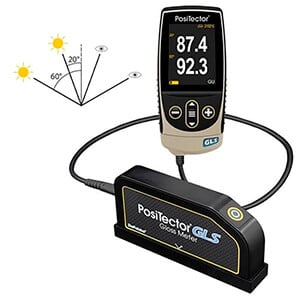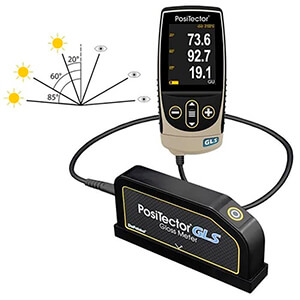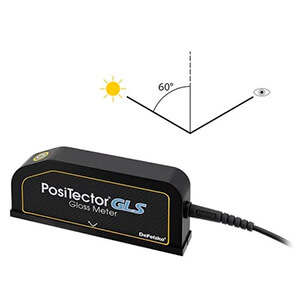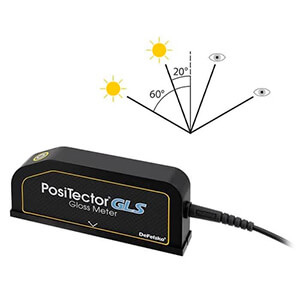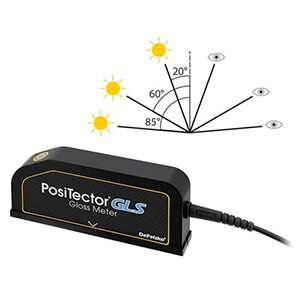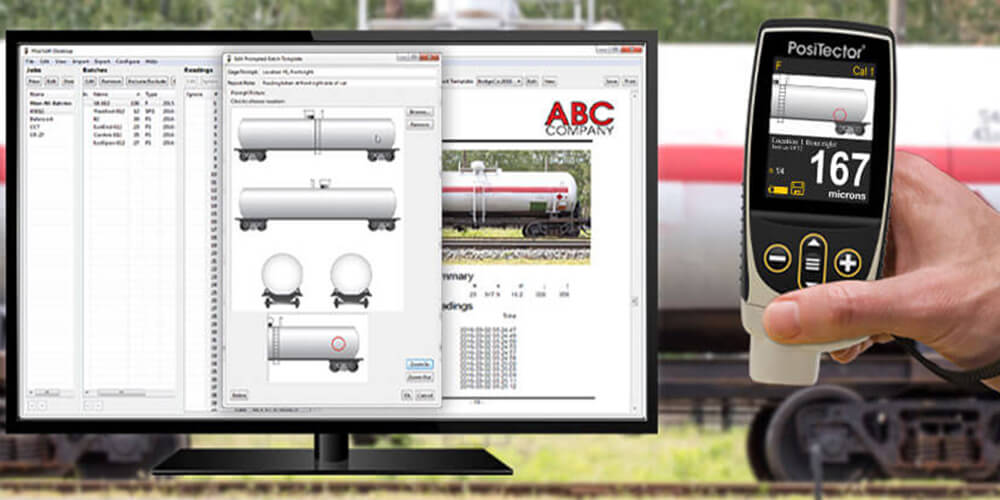DeFelsko PosiTector GLS Gloss Meter
F.A.Q.
What is gloss and why is it important to measure?
Gloss is an optical property that indicates how well a surface reflects light in a specular (mirror-like) direction. It refers to how lustrous or shiny an object appears, generally affecting its aesthetic and perceived value.
Gloss measurement is useful for identifying process issues and defective parts—maximizing consistency, reducing waste, and improving quality.
What is Reflectance?
When light hits a surface, some of it is absorbed, and some is reflected. The reflected light is responsible for how the object is perceived. Reflectance as it relates to gloss measurement is the proportion of light sent and the amount of light detected.
What is a Gloss Unit (G.U.)?
Gloss Units are the unit of measurement typically measured and reported when measuring gloss. Gloss Units are defined by standards such as ISO 2813. Gloss meters such as the PosiTector GLS can display in both GU and percent reflectance directly on the gage.
What is Haze?
Haze in relation to gloss measurement is the appearance of a "milky" halo or bloom perceived in reflective surfaces.
Does the PosiTector GLS need to be 'calibrated' or 'adjusted' prior to use?
The innovative technology and factory calibration in the PosiTector GLS means that it arrives ready-to-measure—usually there is no need to perform a calibration adjustment. If the probe is resting in the included protective base plate and the Power-On Cal feature is enabled, the probe will automatically perform a check and calibration using the certified gloss standard (tile) incorporated in the base plate
Does the PosiTector GLS require any formal training for use? Do you offer 'demo' models?
No. The PosiTector GLS is designed for simple operation, featuring easy-to-use menus, instruction manuals, and helpful videos. In lieu of demonstration models, we provide unlimited technical support via telephone and/or email, and a limited 30-day money back guarantee.
How often should the PosiTector GLS be recalibrated?
PosiTector GLS Gloss Meters include a Certificate of Calibration with no expiry or end date. Many organizations with a quality program and recertification programs require annual recalibrations, and this is a good starting point for most users. DeFelsko recommends that customers establish calibration intervals based upon their own experience and work environment. Based on our product knowledge, data and customer feedback, a one-year calibration interval from the date the instrument was placed in service is a good starting point.
What is the measurement range of the PosiTector GLS Gloss Meter?
PosiTector GLS Gloss Meters are available in three different models:
- PosiTector GLS 60° — Suitable for most gloss applications (0–1000 GU)—preferred angle for semi-gloss.
- PosiTector GLS 20° / 60° — Ideal for high- to semi-gloss surfaces (0–2000 GU)—also capable of calculating Haze Index.
- PosiTector GLS 20° / 60° / 85° — Suitable for all gloss applications including high-, semi-, and matte-gloss—also capable of calculating Haze Index.
How many readings can the PosiTector GLS Gloss Meter store into memory?
The PosiTector GLS Standard is capable of storing up to 1,000 readings into memory. The PosiTector GLS Advanced can store up to 250,000 readings in 1,000 batches. Both Standard and Advanced models feature a USB port and include a USB cable to download, view, and print stored readings quickly and easily with PosiSoft Desktop.
How fast can the PosiTector GLS Gloss Meter measure?
By default, PosiTector GLS Gloss Meter Standard models can take 60+ readings per minute. With an Advanced PosiTector gage body, 2 powerful scan modes (Normal and Statistics) allow for even faster and more efficient measurements.
What is the HiLo Alarm Mode for the PosiTector GLS?
Available on both PosiTector GLS Standard and Advanced models, HiLo Alarm Mode audibly and visibly alerts when measurements exceed user-specified limits, and can be used as Pass/Fail for quick inspection. View the following video for an example of how HiLo Alarm Mode works.
What is the Normal Scan Mode for the PosiTector GLS?
The PosiTector GLS Advanced features a "Normal Scan Mode" for making short work of measuring gloss over large surfaces. View the video for an example of how Normal Scan Mode works.
What is the Statistics Scan Mode for the PosiTector GLS?
The PosiTector GLS Advanced features a "Statistics Scan Mode" for measuring gloss levels. Take continuous readings and record average, standard deviation, min/max, and number of readings while scanning. View the video for an example of how Statistics Scan Mode works
What Standards does the PosiTector GLS Gloss Meter conform to?
ASTM C584 - Standard Test Method for Specular Gloss of Glazed Ceramic Whitewares and Related Products
ASTM D523 - Standard Test Method for Specular Gloss
ASTM D4039 - Standard Test Method for Reflection Haze of High-Gloss Surfaces
ISO 2813 - Paints and varnishes - Determination of gloss value at 20°, 60° and 85°
ISO 7668 - Anodizing of aluminium and its alloys - Measurement of specular reflectance and specular gloss of anodic oxidation coatings at angles of 20°, 45°, 60° or 85°
JIS Z 8741 - Specular Glossiness - Methods of Measurement
AS/NZS 1580.602.2 - Paints and related materials - Methods of test - Measurement of specular gloss of non-metallic paint films at 20 degrees, 60 degrees and 85 degrees
